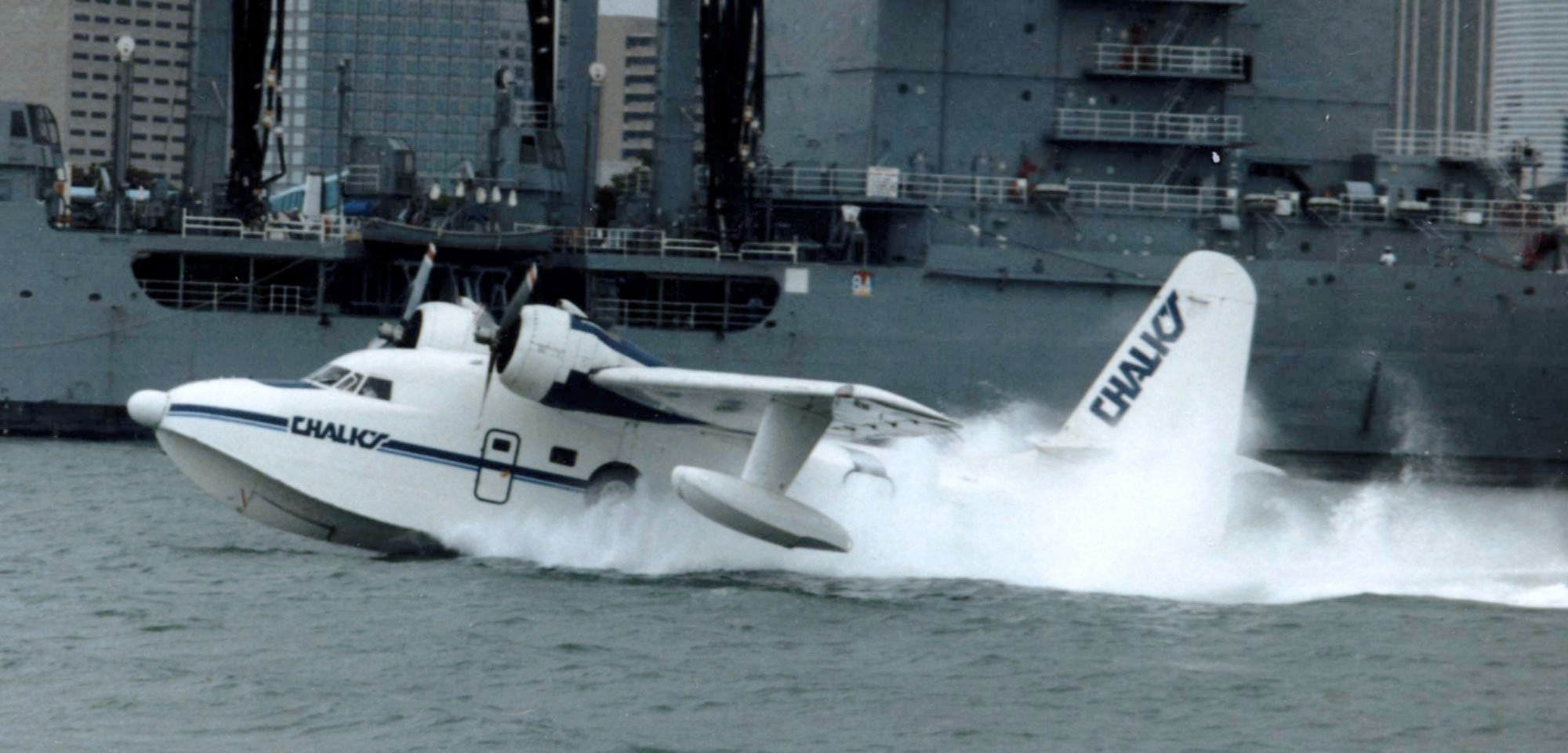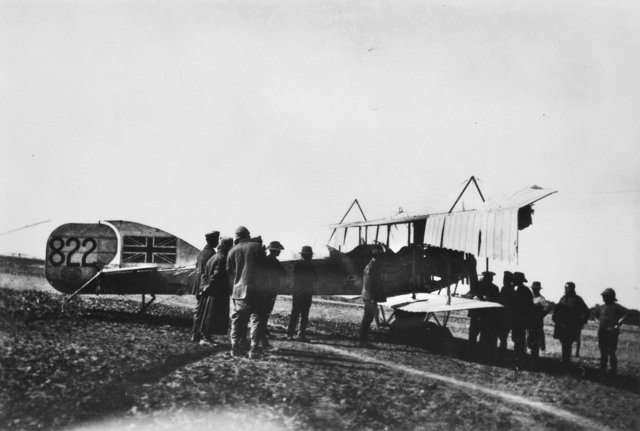|
Fairey Aviation
The Fairey Aviation Company Limited was a British aircraft manufacturer of the first half of the 20th century based in Hayes, Hillingdon, Hayes in Middlesex and Heaton Chapel and RAF Ringway in Cheshire that designed important military aircraft, including the Fairey III family, the Fairey Swordfish, Swordfish, Fairey Firefly, Firefly, and Fairey Gannet, Gannet. It had a strong presence in the supply of naval aircraft, and also built bombers for the RAF. After World War II, the company diversified into mechanical engineering and boat-building. The aircraft manufacturing arm was taken over by Westland Aircraft in 1960. Following a series of mergers and takeovers, the principal successor businesses to the company became FBM Babcock International, Babcock Marine, Spectris, and KNDS, WFEL (formerly Williams Fairey Engineering Limited), the latter manufacturing portable bridges. History Founded in 1915 by Charles Richard Fairey (later Sir Richard Fairey) and Belgian engineer Ernest O ... [...More Info...] [...Related Items...] OR: [Wikipedia] [Google] [Baidu] |
Fairey Gannet
The Fairey Gannet is a carrier-borne aircraft that was designed and produced by the British aircraft manufacturer the Fairey Aviation Company. It was developed for the Royal Navy, being the first fixed-wing aircraft to combine both the search and strike portions of anti-submarine warfare (ASW) operations to be operated by the Fleet Air Arm (FAA). The Gannet was originally developed to meet a Second World War era requirement for a dual-role ASW and strike to equip the FAA.Taylor 1974, pp. 356–357. It was a mid-wing monoplane with a tricycle undercarriage and a crew of three, with a double turboprop engine driving two counter-rotating propellers. On 19 September 1949, the prototype Gannet performed its maiden flight. Four years later, it was brought into regular service with the FAA. The service would use the type from the majority of its aircraft carriers throughout the Cold War. Various export customers were also secured for the Gannet, including the Royal Australian Navy, ... [...More Info...] [...Related Items...] OR: [Wikipedia] [Google] [Baidu] |
Curtiss D-12
The Curtiss D-12, sometimes identified with the military designation Curtiss V-1150, was an aircraft engine of 18.8 liter displacement. It was a water-cooled V12, producing 443 hp (330 kW) and weighing 693 lb (314 kg). It was designed by Arthur Nutt in 1921 and used in the Curtiss CR-3 for the 1923 Schneider Trophy race. Fairey Aviation of England imported 50 Curtiss-built examples in 1926, renaming them the Fairey Felix. The D-12 was one of the first truly successful aluminum cast- block engines and was extremely influential in the interwar period. Numerous engines trace their design to the D-12, among them the Packard 1A-1500, Rolls-Royce Kestrel and Junkers Jumo 210. Applications D-12 * Boeing Model 15 * Curtiss CR * Curtiss Falcon The Curtiss Falcon was a family of military biplane aircraft built by the American aircraft manufacturer Curtiss Aeroplane and Motor Company during the 1920s. Most saw service as part of the United States Army Ai ... [...More Info...] [...Related Items...] OR: [Wikipedia] [Google] [Baidu] |
Sylvanus Albert Reed
Sylvanus Albert Reed (8 April 1854 – 1 October 1935) was an American aeronautical engineer who developed the modern metal aircraft propeller. Early life and career Reed Graduated from Columbia University in 1874. He worked as an engineer specializing in electrical signals for railroad safety until his retirement in 1912. Later career In 1915, Reed experimented with metal propellers using a 10 hp electric engine driving propellers up to 19,000 rpm. He researched propeller shapes and materials that could withstand tip speed up to Mach 1.35. In 1920, the local police encouraged him to move his experiments from his attic and rented a shop at the Curtiss aircraft company's Garden City factory. He invented the Reed Metal Propeller, testing it in August 1921 on a Curtiss K-6 powered Standard. It was developed for use on the PW-8 and Curtiss D-12 powered Hawk. He won the 1925 Collier Trophy for his development of the Reed Aeronautic Propeller. In December 1934 Reed donated an e ... [...More Info...] [...Related Items...] OR: [Wikipedia] [Google] [Baidu] |
Missile
A missile is an airborne ranged weapon capable of self-propelled flight aided usually by a propellant, jet engine or rocket motor. Historically, 'missile' referred to any projectile that is thrown, shot or propelled towards a target; this usage is still recognized today with any unguided jet- or rocket-propelled weapons generally described as rocket artillery. Airborne explosive devices without propulsion are referred to as shells if fired by an artillery piece and bombs if dropped by an aircraft. Missiles are also generally guided towards specific targets termed as guided missiles or guided rockets. Missile systems usually have five system components: targeting, guidance system, flight system, engine, and warhead. Missiles are primarily classified into different types based on firing source and target such as surface-to-surface, air-to-surface, surface-to-air and air-to-air missiles. Terminology Missile is derived from Latin "missilis" meaning "that may be ... [...More Info...] [...Related Items...] OR: [Wikipedia] [Google] [Baidu] |
Sopwith Baby
The Sopwith Baby is a British single-seat floatplane that was operated by the Royal Naval Air Service (RNAS) from 1915. Development and design The Baby (also known as the Admiralty 8200 Type) was a development of the two-seat Sopwith Tabloid, Sopwith Schneider. The Baby utilized a wooden structure with fabric covering. A Lewis Gun was fitted, either above the fuselage Synchronization gear#Unsynchronized guns and the "deflector wedge" concept, firing through the propeller arc without the benefit of synchronization, or over the top wing, firing above it. To meet the more demanding conditions of 1916–18, further modifications were made on aircraft built by Blackburn Aircraft at Leeds, United Kingdom. A modified variant of the Baby, the Fairey Hamble Baby was built by Fairey Aviation Company, Fairey and Parnall. The Royal Naval Air Service ordered 286 Sopwith Babies of which 100 were built by Sopwith at Kingston and 186 by Blackburn Aircraft at Leeds with others for export. Licen ... [...More Info...] [...Related Items...] OR: [Wikipedia] [Google] [Baidu] |
Flight International
''Flight International'', formerly ''Flight'', is a monthly magazine focused on aerospace. Published in the United Kingdom and founded in 1909 as "A Journal devoted to the Interests, Practice, and Progress of Aerial Locomotion and Transport", it is the world's oldest continuously published aviation news magazine. ''Flight International'' is published by DVV Media Group. Competitors include Jane's Information Group and '' Aviation Week''. Former editors of, and contributors include H. F. King, Bill Gunston, John W. R. Taylor and David Learmount. History The founder and first editor of ''Flight'' was Stanley Spooner. He was also the creator and editor of ''The Automotor Journal'', originally titled ''The Automotor Journal and Horseless Vehicle''.Guide To British Industrial His ... [...More Info...] [...Related Items...] OR: [Wikipedia] [Google] [Baidu] |
Seaplane
A seaplane is a powered fixed-wing aircraft capable of takeoff, taking off and water landing, landing (alighting) on water.Gunston, "The Cambridge Aerospace Dictionary", 2009. Seaplanes are usually divided into two categories based on their technological characteristics: floatplanes and flying boats; the latter are generally far larger and can carry far more. Seaplanes that can also take off and land on airfields are in a subclass called amphibious aircraft, or amphibians. Seaplanes were sometimes called ''hydroplanes'', but currently this term applies instead to Hydroplane (boat), motor-powered watercraft that use the technique of Planing (boat), hydrodynamic lift to skim the surface of water when running at speed. The use of seaplanes gradually tapered off after World War II, partially because of the investments in airports during the war but mainly because landplanes were less constrained by weather conditions that could result in sea states being too high to operate seaplanes ... [...More Info...] [...Related Items...] OR: [Wikipedia] [Google] [Baidu] |
Fairey Campania
The Fairey Campania was a British ship-borne, patrol and reconnaissance aircraft of the First World War and Russian Civil War. It was a single-engine, two-seat biplane with twin main floats and backward-folding wings. The Campania was the first aeroplane ever designed specifically for carrier operations. Development The Royal Navy was an early leader in carrier aviation and in the autumn of 1914, purchased the liner for conversion into a seaplane carrier. Operating seaplanes required the carrier to stop to hoist the aircraft out- and in-board by crane, leaving the ship exceedingly vulnerable to U-boat attacks and the Admiralty began to seek alternatives.Taylor 1988, p.56 By the middle of 1916, ''Campania'' had been fitted with a flight deck forward on which, experiments were being carried out in launching aircraft. The Admiralty issued a specification for a purpose-built, two-seat patrol and reconnaissance aircraft. Fairey Aviation designed a single-engined tractor biplane o ... [...More Info...] [...Related Items...] OR: [Wikipedia] [Google] [Baidu] |
Short Admiralty Type 827
The Short Type 827 was a 1910s British two-seat reconnaissance floatplane. It was also known as the Short Admiralty Type 827. Design and development The Short Type 827 was a two-bay biplane with unswept unequal-span wings, a slightly smaller development of the Short Type 166. It had a box-section fuselage mounted on the lower wing. It had twin floats under the forward fuselage, plus small floats fitted at the wingtips and tail. It was powered by a nose-mounted 155 hp (116 kW) Sunbeam Nubian engine, with a two-bladed tractor propeller. The crew of two sat in open cockpits in tandem. The aircraft was built by Short Brothers (36 aircraft,Barnes & James, p. 527) and also produced by different contractors around the United Kingdom, i.e. Brush Electrical (20), Parnall (20), Fairey (12) and Sunbeam (20). The Short Type 830 was a variant, powered by a 135 hp (101 kW) Salmson water-cooled radial engine. Variants ;Type 827 :Production aircraft with a Sunbeam Nu ... [...More Info...] [...Related Items...] OR: [Wikipedia] [Google] [Baidu] |
Short Brothers
Short Brothers plc, usually referred to as Shorts or Short, is an aerospace company based in Belfast, Northern Ireland. Shorts was founded in 1908 in London, and was the first company in the world to make production aeroplanes. It was particularly notable for its flying boat designs manufactured into the 1950s. In 1943, Shorts was Nationalization, nationalised and later denationalised, and in 1948 moved from its main base at Rochester, Kent to Belfast. In the 1960s, Shorts mainly produced turboprop airliners, major components for aerospace primary manufacturers, and missiles for the British Armed Forces. Shorts was primarily HM Government, government-owned until being bought by Bombardier Inc., Bombardier in 1989 and, in 2007, was the largest manufacturing concern in Northern Ireland. In November 2020, Bombardier sold its Belfast operations to Spirit AeroSystems. The company's products include aircraft components, engine nacelles and aircraft flight control systems for Bomba ... [...More Info...] [...Related Items...] OR: [Wikipedia] [Google] [Baidu] |
Ernest Oscar Tips
Ernest Oscar Tips (born 2 October 1893 in Tielrode, died 10 March 1978 in Brussels) was a Belgian aircraft designer, who co-founded the Fairey Aviation Company in 1915 and its Belgian subsidiary Avions Fairey in 1931. Biography Early days Born in Tielrode near Temse in 1893, the youngest of 13 children. His family was active in building mechanical systems such as bicycles. He studied at the Institut St Willebrord, but moved to Brussels at 14 years old to live with his brother after his father had died. E.O. Tips was already building aircraft ("avion Canard") in 1908, with his brother Maurice. In 1909, they had built a biplane with a rotor. Together, they acquired the licence of the Gnome engine for Belgium and the Netherlands. He fled Belgium at the outbreak of World War I, arriving in England via the (neutral) Netherlands. He learned aeronautical engineering at Short Brothers, and was the first employee of the newly established Fairey Aviation Company that he cofounded i ... [...More Info...] [...Related Items...] OR: [Wikipedia] [Google] [Baidu] |






